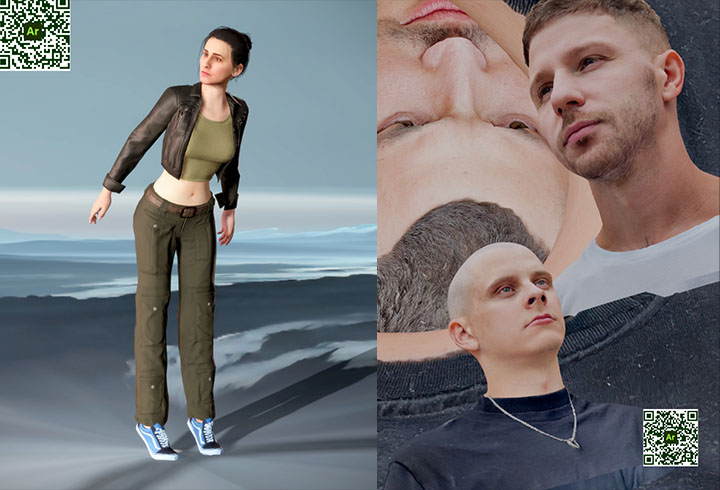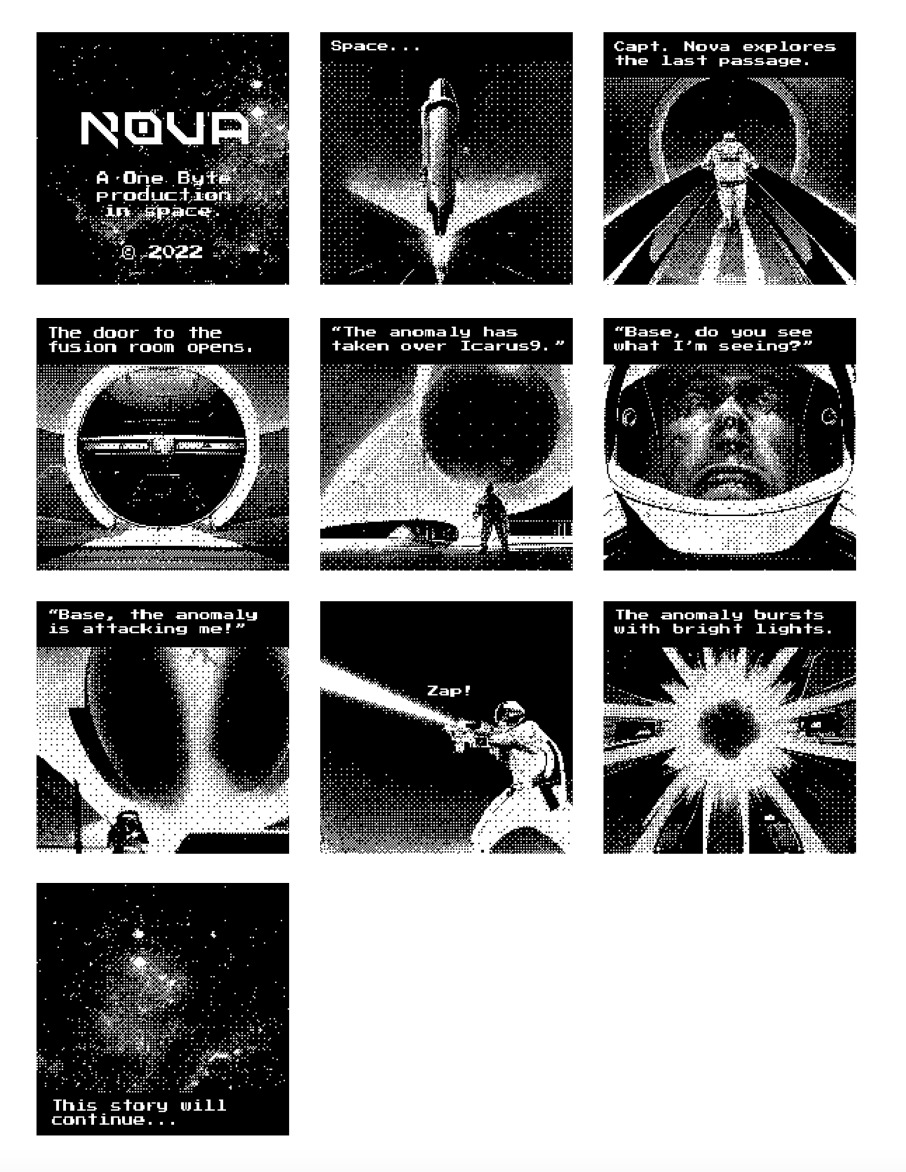This website uses cookies so that we can provide you with the best user experience possible. Cookie information is stored in your browser and performs functions such as recognising you when you return to our website and helping our team to understand which sections of the website you find most interesting and useful.
Master in Creative Computing
Key Data
- Start: June 3rd 2024.
- End: March 23rd 2025.
- ECTS Credits: 60.
- Certificate: Master's degree issued by Elisava and University of Catalonia (UVic-UCC).
- Methodology: Online.
- Language: English.
- Director: Deren Guler.
- Unit slots: 25.
Presentation
Master in Creative Computing: merging creativity with technology
The rise of digital technology has directly impacted the creative economy. For that reason, the sector needs professionals with “createch” skills who can easily combine creative and technical competence in order to solve real-world problems.
Our Master in Creative Computing aims to provide a general-purpose education in using new technologies for creative endeavors. It reflects an ever-changing media landscape, where this year ‘s media might be discarded in the next year.
The main goal of this creative computing master, however, is not to teach specific skills, but to learn to identify opportunities for creativity in the technological space. By completing the master, you can become a professional who proposes creative configurations for new and old platforms, reinvent careers in companies which need innovative products, find your artistic path, or even become autonomous, inventive, high-tech entrepreneur.
Are you ready?
Objectives
The objectives of the Master in Creative Computing are:
- Identify new opportunities for creative projects based on emerging technologies.
- Use AI tools in creative projects, both as a tool to process information and as a device that can produce automated, yet relevant, content.
- Develop contraptions that make bridges to the physical world by using sensors, motors, controlling objects, sharing and accessing real-time environmental data from anywhere.
- Develop immersive narrative experiences based on virtual reality, 360 cinema, extended reality and more.
- Use data as a raw material for creative applications.
Contents
Module 1: Introduction to creative computing.
→ When computers got creative.
→ Projection mapping, live cinema and new configurations for audiovisual experiences.
→ Movement technologies: dance and performance, robotic and kinetic art.
→ Art in science: physics and in the outer space.
→ Biological and genetic arts.
Module 2: Designing Generative Experiences.
→ Algorithms and natural phenomena: simulations.
→ Complexity through repetition: patterns.
→ Temporal processes: time series, video, distortions.
→ Review and final project: difference and repetition.
Module 3: Creative blockchain applications.
→ History of cryptoeconomics and blockchain space. Issues of concentration, decentralization, sustainability.
→ Non-fungible: artistic and social experiments in the blockchain.
→ How to mint and trade – some platforms for experimenting.
→ Practical tokenization.
Module 4: Data art.
→ Open tools for data visualization: Flourish, Datawrapper, SPSS.
→ Data sources: scraping, OSINT, open servers.
→ Open cartography: mapbox, cartodb, mapshaper, GIS, GPS data.
Module 5: Designing activated objects and environments.
→ Intro to Microcontrollers, Input Output.
→ Activating Objects.
→ Intro to Design Fiction.
→ Making things talk (remote interaction).
→ Creative Coding.
Module 6: Designing with AI.
→ How does AI work? Introducing neural networks and machine learning models.
→ Open models for image generation and manipulation.
→ Open models for music and text production.
Module 7: Creating immersive narratives
→ Extended reality.
→ Virtual reality.
→ 360 cinema.
→ Volumetric cinema.
Module 8: Internet equalities and decolonizing technologies.
→ Bias and discrimination in data.
→ Internet inequalities.
→ Threats to an open internet.
→ Web3: decentralized internet beyond the blockchain
Module 9: Final Master’s Project (TFM).
*The program includes an annual license to the Adobe Suite package.
Creative Pills
In addition to the specific modules of the Master, you will also be able to access two training workshops on tools and methodologies related to the world of creation and design.
In the following link you access the list of all the creative pills you can take during the master’s degree. You can choose up to two at no cost.
Students' projects
Book that offers valuable insights, visualizations, and practical solutions for digital challenges, enhancing your reading experience with augmented reality, enabling indepth exploration through scanning capabilities.
Symbiosis is an interactive installation that explores the concept of co-creation between humans and machines through a motion-responsive and dynamically adaptive video projection.
Who it is aimed at
Our Master in Creative Computing doesn't have one specific target audience in specific but it is mostly directed to students and professionals that want to improve their skills and learn the new paths that this subject is taking nowadays.
- Creative people from all fields - editors, artists, playwrights, dancers, musicians, advertisers, designers - who wish to incorporate technology into their practice.
- Technical people from any field - developers, engineers, chemists, physicists - who want to understand and apply the potential for art and creativity in their own practice.
- People wishing to change careers into fields that will benefit from the blend of art and technology.
Career opportunities
Upon completion of the master's in Creative Computing degree you will be prepared to work as:
- Creation of contemporary art projects based on generative systems.
- Direction of scenographic design projects.
- Exhibition design project management.
- Design and creation of interactive devices.
- Audiovisual content design on and off screen.
- Generative graphic design sound design.
- Computational Design Consulting.
Methodology
- Our methodology is 100% online, providing the flexibility to combine training with the rest of your professional and personal responsibilities.
- Methodological model supported by the rigor of Elisava and the University of Vic - Central de Catalunya.
- Methodology based on Learning by Doing with the realization of real projects.
- Flexible model that combines synchronous and asynchronous training.
- Weekly live videoconferences with teachers between 6:00 p.m. and 10:00 p.m. (CET).
- Recording of live sessions to view them later.
- Personalized monitoring and tutoring by a specialized team.
Faculty
Admission process
The requirements for access to the online Master in Creative Computing are:
- You need to have a University Degree in some creative discipline. It is also possible to access the program with degrees from other relevant careers, for example, engineering, design, or Business.
- If you don’t have a University Degree, you can access the program based on your professional experience that can be accredited (In this case, you won’t be able to receive the Master’s Degree, but a Program Certificate).
- Sufficient level of the English language to understand and be able to carry out the program correctly.
- Computer and good internet connection.
- To be an efficient, planned and autonomous learner.
- As a benefit, by enrolling in the master's degree, you will become part of the Elisava Bold alumni community during the academic year in which you are studying the SHIFTA master's degree.
Methods of payment and financing
From SHIFTA, we offer you the following forms of financing so that the economic aspect is not an impediment.
Single payment
If you pay for the master’s degree in cash, you will receive a 5% discount on the final price.
Own financing
We offer you the possibility of financing the master’s or postgraduate course in up to 10 monthly installments at no financial cost (0% TAE).
External financing
If you want a larger number of installments, we have an agreement with Nemuru, the external financing platform, which allows you to extend the installments up to 18 months. (Option subject to the approval of the financial institution itself after studying the relevant documentation). You will be able to access them once your admission to the program has been notified.
Public subsidies
You can finance your training thanks to the bonuses offered by the State Foundation for Employment Training (FUNDAE) and the Tripartite Foundation to companies to train their workers. In this case, we have the support of an external consultancy specialized in this process.
















